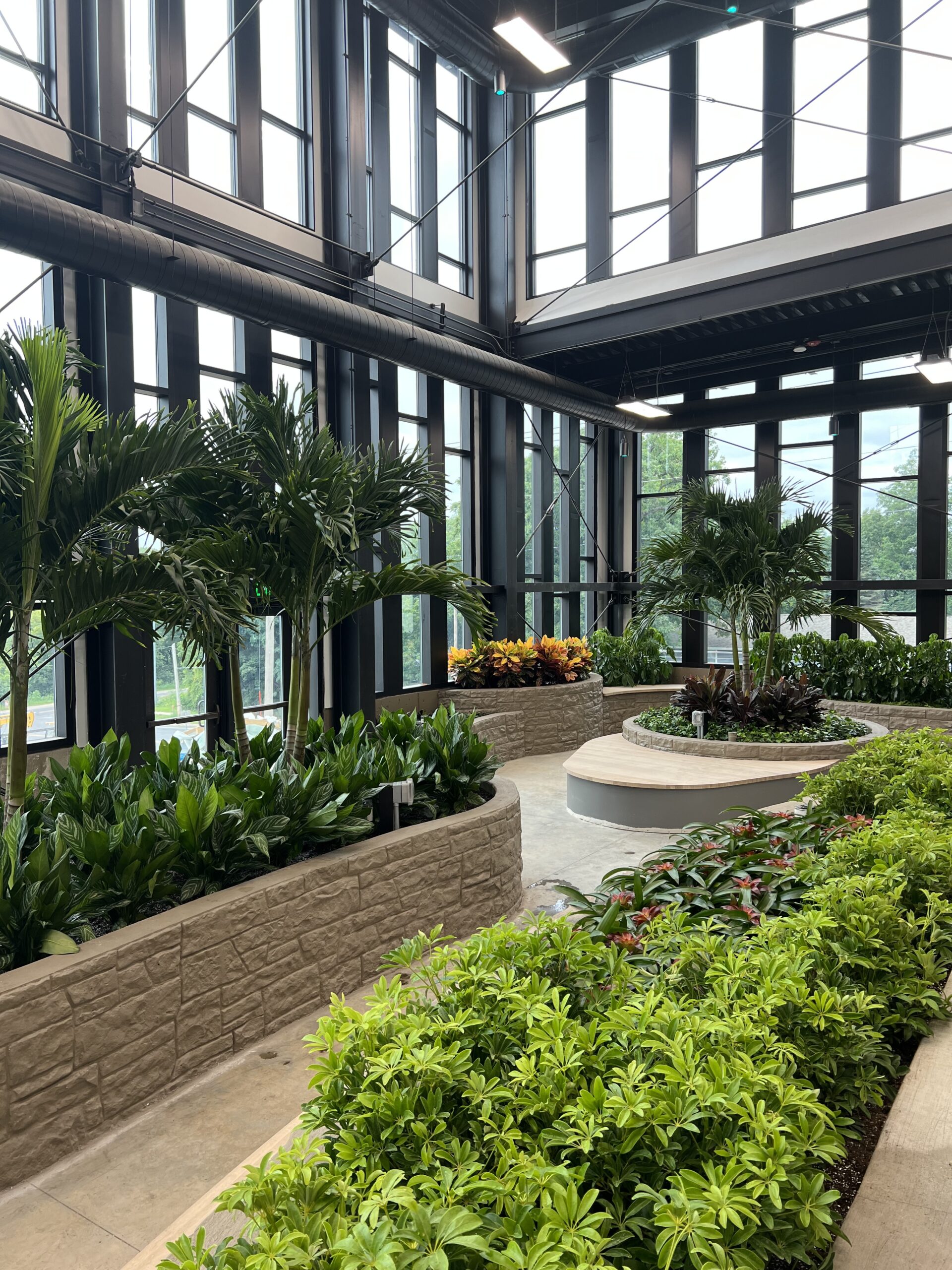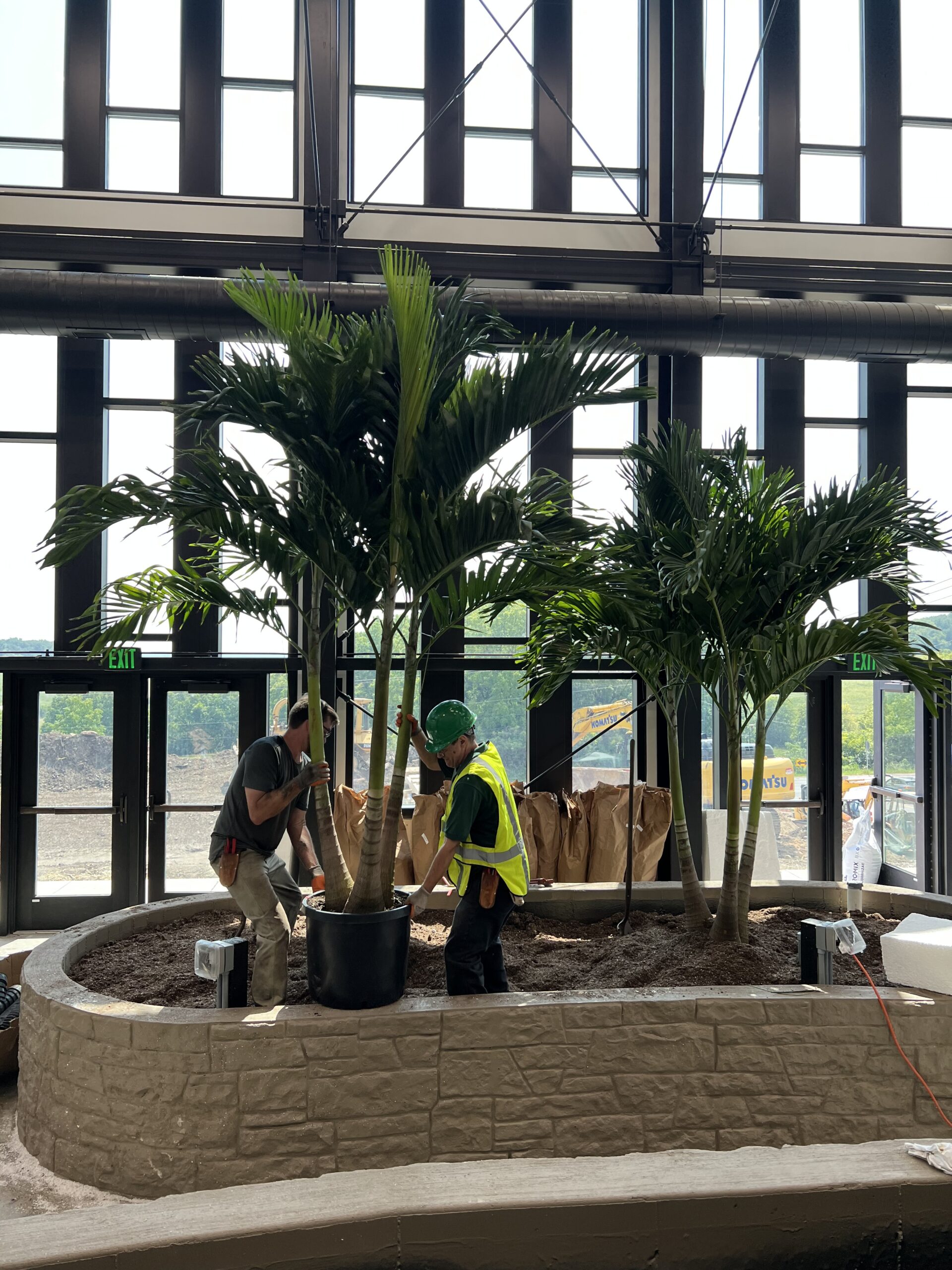Hickory Hill Academy, a private K-8 institution in Madison, Wisconsin, is redefining education by incorporating biophilic design. Under the leadership of CEO Michael Hogland, the academy sought to include an indoor nature-infused learning environment that enhances student well-being, engagement, and curiosity.
When we were first approached, our primary task was to value-engineer the Conservatory space, as the initial conceptual plans exceeded the budget. Upon reviewing the designs, we identified areas where infrastructure needs for interior plantings had been overengineered. By collaborating closely with the academy’s architects, we streamlined construction costs while maintaining the integrity of the biophilic vision. This phase was crucial in ensuring the Conservatory became a reality within the project’s financial constraints.



